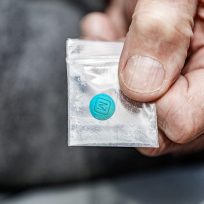Opiates are the oldest class of drugs in the world still in use today. Every drug in this category is, or was originally meant to be, a pain reliever. For many people who develop a dependence on one or more opiates, the path to addiction often starts when these drugs are taken primarily for their euphoric effects. While an opiate addiction may develop for several different reasons, there are some common patterns that often lead to such behaviors.
Assuming Opiates Are a Safer High
Some opiate users make the assumption that prescription painkillers are a safer way to get high since the ingredients are legit and they were prescribed by a doctor. When abused, however, these medications can be just as dangerous as “street opiates.” Oxycodone, heroin, and opium are the most commonly abused opiate drugs.
Denying There’s a Problem
Regardless of why opiates are used or abused, addicts may not admit a problem exists. This denial of an addiction may include making excuses for needing painkillers, deliberately hiding usage, or flat out denying anything is out of the ordinary when directly confronted. Denial may also include an assertion that “I can quit anytime I want to” or a belief that “What I do isn’t affecting anyone else.”
Developing a Physical and Mental Dependence
Opiate addiction sometimes develops over time from a legitimate use of strong painkillers, as may be necessary after surgery or when living with a chronic pain condition. As opiates continue to be used, receptors in the brain develop a tolerance to those medications, making it necessary to take more opiates to achieve the same level of relief. This often leads patients to take actions that may include:
- “Doctor shopping” to obtain multiple prescriptions for the same medications
- Claiming pain is worse in an effort to obtain a stronger dose
- Continuing to insist painkillers are necessary even when pain subsides or goes away
Knowing When It’s Time to Consider Recovery Treatment
Recovery is only going to be effective when an opiate user admits there is a problem. While interventions may be successful under certain circumstances, patients are more likely to respond to treatment when there’s an honest desire to be actively participate in recovery. Signs of an opiate addiction include:
- A noticeable increase in euphoric feelings
- Shifting or dramatically changing moods
- Social withdrawal or isolation
- Increased drowsiness or confusion
Regardless of the path of opiate addiction that leads to reliance on these drugs, there’s often hesitation to commit to a recovery program because of a fear of potentially painful withdrawal symptoms. An appealing alternative to traditional detoxification is a process known as rapid detox. Performed under general anesthesia, it’s a medically supervised procedure that often allows patients to continue with treatment free of opiates.







